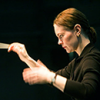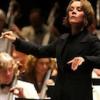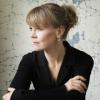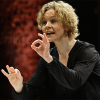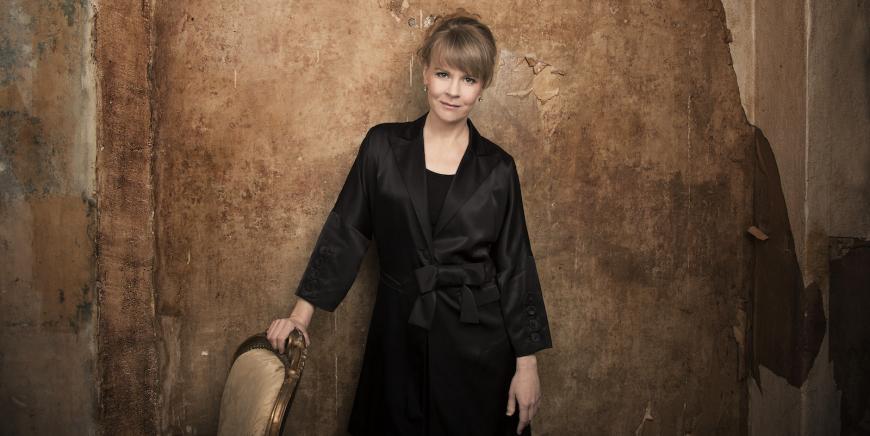
For a relatively small country — about the size of two Wisconsins — Finland has produced some magnificent musicians, conductors, and composers. This Northern European nation can count Esa-Pekka Salonen, Kaija Saariaho, and Susanna Mälkki as among its finest musical exports. Mälkki, who has been principal guest conductor of the Los Angeles Philharmonic since 2017 — the first in a generation and the first woman to hold the post — again takes to the podium at Walt Disney Concert Hall for a series of concerts October 29–31 and November 6–7.
And her accolades have been many: In 2019, The Boston Globe’s Jeremy Eichler, writing of Mälkki’s performance of Fauré’s Pavane, noted that she “drew colors from the orchestra and shaped dynamics in a way that was true to this music’s wistful beauty ...” That same year, Anthony Tommasini, of The New York Times, hailed her third appearance with the [New York Philharmonic], and wrote that “she proved once again why she’s one of the most exciting and in-demand conductors of her generation.”
But Mälkki, now 52, did not begin her career wanting to wield a baton, and instead learned to play the violin, piano, and cello in her youth. Indeed, the Finn, who studied at the Sibelius Academy as well as at London’s Royal Academy of Music, took top honors at the Turku National Cello Competition in 1994. From 1995–1998, Mälkki became principal cellist in the Gothenburg Symphony Orchestra, ultimately leaving that position to devote herself to conducting.
Currently in her sixth season as chief conductor of the Helsinki Philharmonic Orchestra (HPO), the musician also appears regularly with top ensembles throughout Europe and North America, including with the Chicago Symphony Orchestra and the Berlin Philharmonic. Paris-based Mälkki is also in demand at major opera houses, with past gigs including at the Opéra national de Paris, the Wiener Staatsoper, and the Metropolitan Opera, where she returns in 2022 for Stravinsky’s The Rake’s Progress.
I caught up with Mälkki via Skype from Philadelphia, where, in between rehearsals with the Philadelphia Orchestra, we chatted up a range of subjects — from her relationships with Salonen and Saariaho to her provocative programming choices.
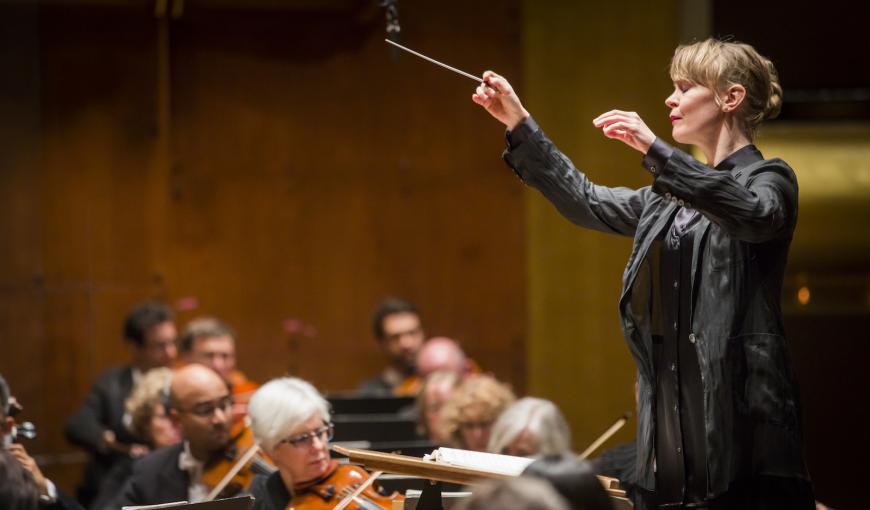
I first want to ask how it feels to be in front of live audiences again. You led the London Symphony Orchestra in the world premiere of Saariaho’s opera, Innocence, at the Aix-en-Provence Festival in July and you recently debuted a work with esperanza spalding, Claire Chase, and the HPO in early September.
It’s fantastic to have audiences back. COVID, it’s a big, big topic, of course, and we are making music as communication and if we don’t see the people we are communicating to or with it’s all different. It’s so much more meaningful with the audiences present. It’s all about the energy of the people, the live vibrations. It’s wonderful.
Looking back, was it an easy decision to transition from playing in an orchestra to then conducting one?
It was a gradual one. I guess the big decision was when I decided to leave my job in the orchestra, but I always knew that it was the right decision and things happened very organically. From that moment on, I quite quickly got interesting work and met people I’m still collaborating with. It was all very organic. In a way, the conducting chose me, because I quickly noticed that I didn’t have time to practice the cello anymore.
You’re kicking off your fourth season as principal guest conductor of the LA Phil. How would you describe working with the band and what makes for good chemistry between a conductor and an orchestra?
It’s been amazing working with the LA Philharmonic because they’re such a versatile orchestra. They’re able to do the newest, most modern music and also, they have all the knowledge of the symphony orchestra, with all the traditions. The institution is so incredibly inspiring — the openness, the adventurousness and all of that. It’s really a modern orchestra at its best and the musicians are of the utmost virtuosity. It’s been an amazing privilege, absolutely.
Good chemistry — of course we are people at work but I think it’s the shared enthusiasm about music that makes it go beyond the sort of normal, everyday work, and the LA Phil is an extrovert orchestra. I like that. They are clearly enjoying what they do and that’s really the basis for a wonderful communication with audiences and I appreciate the versatility. It’s really important and it’s fascinating because then you can make connections between different pieces. You have the sense of history and perspective.
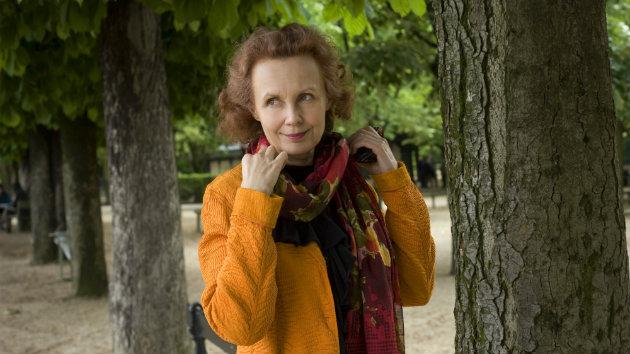
At the end of October, you’re leading the U.S. premiere of Kaija Saariaho’s Vista, (premiered in May with the Helsinki Philharmonic) an LA Phil co-commission that is dedicated to you. How do you decide on a program, and what’s it like working with Saariaho?
How I decide on programming [is that] it’s always a collaboration between the conductor and orchestra. It has to fit in the season, but I think what has also been so amazing with collaborating with the LA Phil is that their understanding of programming is so intelligent and open-minded and it’s totally natural to put pieces — the warhorses, the blockbusters — that go very well with a modern piece. I’m always happy to combine two elements.
With Vista, it was the wish of myself and the orchestra, because it is a co-commission. And second — Saariaho is the most important of living composers. Her [2016] harp concerto [Trans, performed with the LA Phil in 2019], the sound world of Saariaho is very special. And, of course, having a piece which she wanted to write for me after all these years of collaboration, it has a very special place in my heart and I think it’s great it will have its U.S. premiere in L.A.
What can we expect to hear in Vista?
This piece was in the making when Saariaho was in L.A. for the harp concerto. It has a strong connection to the West Coast of the United States and Vista, the name already refers to all those incredible sceneries. It’s a very good orchestral piece with lots of different characters. You will notice it’s [an] impressive synthesis of modern language, which is integrating all the traditional expressions of the orchestra.
It happens also with the maturity of composers [Saariaho is 69]. You have the composer’s own language and then you have the sort of tradition that comes with the composer mastering the language that matures with time. It becomes universally understandable and expressive and it’s a beautiful example of how you can be relevant in our time and in the history of music.
I’m certain Saariaho’s music will be up there with the greatest names. Our task as performers, we are together creating the tradition. It’s a wonderful privilege to work with living composers and discuss with them and help create this tradition.
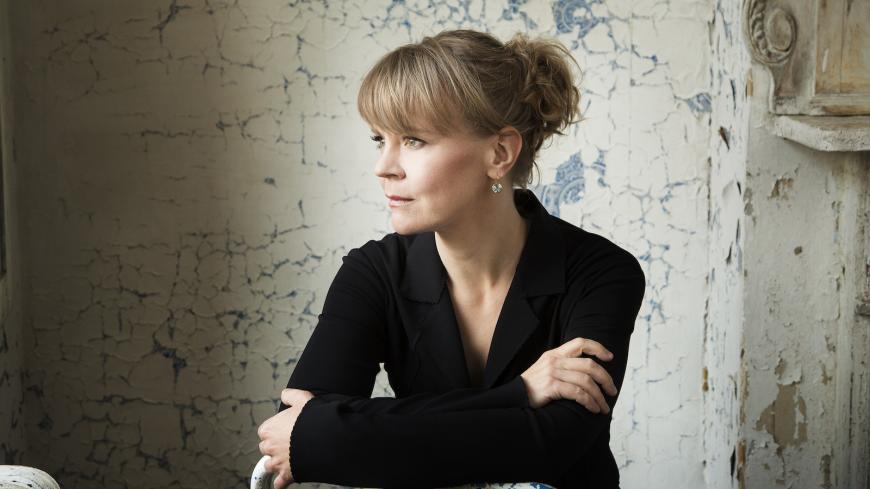
Why is championing new music so important to you?
New music is important because it’s the music of our time. Of course, that’s the phrase you know — it’s speaking about the world we live in. In classical repertory we talk about being aware of the epoch — where it comes from, the culture, all of those references. When we play music of our own time, we are like fish in the water. It’s extremely important to give that voice to composers of our time. Not only understanding our own time, but making sure this art form is living and healthy and will tell stories about our time for the future generations. Not only about performing, but making sure it exists. It’s important that performers and organizations take that responsibility.
For your November 6–7 concerts, you’ve programmed Steve Reich’s Runner, John Adams’s Violin Concerto and Rachmaninoff’s Symphonic Dances. What are the connections between these works?
With Reich and Adams, we’re very much in American music and I think there is a stylistic connection between those two and we were wondering for the second half of a piece which would also be connected to the American musical tradition. Rachmaninoff, even if he was born Russian, he emigrated to the States and the [1943] Symphonic Dances are a late piece and I think that’s an essential part of the history of music and American music.
All these European composers that came to America and made the later parts of their careers in America, that’s essential to remember when we think about the journey of these composers that had their origins [elsewhere], but again it was some kind of synthesis. Rachmaninoff, in a way he stayed very consistent in his own style. He didn’t turn like Stravinsky [who] changed style several times, but Rachmaninoff was still representing both the time and where he was when he wrote the Symphonic Dances. He has the Slavic melancholia and all that expressive melodic talent is there. It’s fantastic and one of my favorites and I think it makes a relevant and important program.
You’re in your sixth season as chief conductor of the Helsinki Philharmonic. How does leading your own ensemble infuse your programming and the notion that you really get to know the musicians in a way that guest conducting doesn’t allow?
That’s a nice question. I think the relationship between an orchestra and chief conductor is something that allows going deeper in the music. You can build on your previous weeks and years. You grow together and the communication crystallizes somehow and I think it’s fascinating how everything you have done together is nourishing what you’re doing, whatever the repertory is.
In Helsinki, we have done a lot of different kinds of repertory and I found that would be important for the orchestra’s development, rather than doing things they’re already good at. Enlarging the repertory is developing the skills of the orchestra. Then when you come back to the familiar, you have new elements, new palettes of colors, which you can use. In that sense, you can go deeper, you can take possibly more risks.
And the other thing, which is a real luxury, we have been able to do recordings, which is an important part of what a chief conductor and an orchestra do together. Recording is a good way of going deeper in the music. You go into details; you make the best possible version that you can, if conditions allow that. It’s been a wonderful time already.
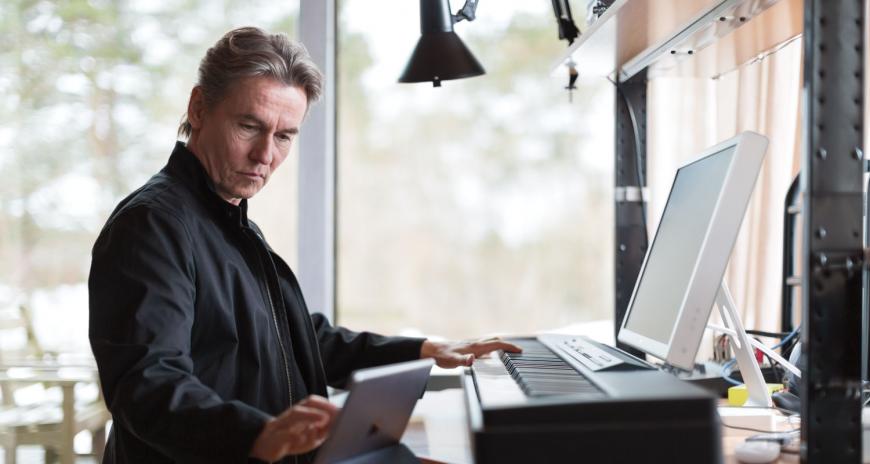
You met Esa-Pekka Salonen nearly three decades ago. How important was he in your career and how would you characterize your relationship with him?
He was one of the first persons who saw me conduct at all, almost 30 years ago. It’s been wonderful, because it started as a mentorship and now today it’s like we are colleagues and friends and I can’t even describe how valuable that is. We’re able to exchange experiences and talk about repertory. That is so precious [because] it’s a profession which is complex in many ways. We are, many times, people in leadership positions [and] sometimes we can feel lonely and it’s incredibly valuable to have colleagues like him to talk to.
He’s someone who has perspective and, in his case, from a longer time than I have. It’s wonderful, it’s, humanly speaking, absolutely fantastic and I’m very happy to have that with him. I admire him greatly. His work ethic and his visionary approach to everything that has to do with modern orchestras — what this old kind of institution can mean today. All of that intellectual thinking is very important and he’s one of those conductors today who asks these very important questions.



